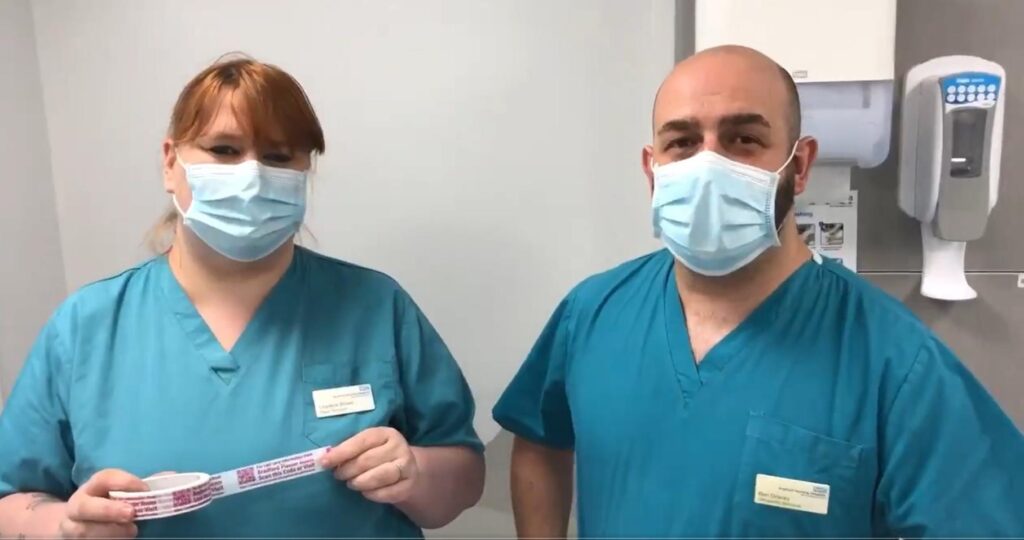
THE innovative plaster team at Bradford Royal Infirmary (BRI) has come up with a cracking idea to help patients with broken bones care for their casts.
The answer to all their questions can now be found via a simple QR code – a two-dimensional barcode that can be scanned by a smartphone’s camera – which links patients to a dedicated website containing all the information they need.
The code has been printed on special, hard-wearing adhesive tape which is attached to each patient’s cast.
Plaster Technicians, Charlene Brown and Ben Gracey, came up with the idea, and have been supported in its development by Gary Hannant, a Consultant Orthopaedic Surgeon at BRI, part of Bradford Teaching Hospitals NHS Foundation Trust, and Fragility Fracture Liaison Sister, Janine Connor.
Charlene said: “The idea came about because we were constantly getting calls from patients who had been fitted with a cast who were asking questions about how they should care for them – despite us giving them the advice they needed before they left hospital!
“These were always the same kinds of questions such as ‘can I get my cast wet?’, ‘it feels tight and uncomfortable, is this normal?’, ‘it’s giving me pins and needles, do I need to come back?’ and even ‘can I take it off?’
“It was obvious that patients were just not listening to what we were telling them and this meant spending time answering phone calls trying to explain things.”
Encouragement
After discussing the idea and receiving encouragement from hospital colleagues, Charlene set about contacting plaster rooms in hospitals the length and breadth of the country – as well as abroad – to see if anyone had produced something similar.
“It soon became clear we were going to be the first in the world to do this,” said Charlene.
“We know that the only other hospital with a QR code is one in Cornwall – however their QR code links to their hospital website only, whereas our code links directly to the relevant cast care pages.”
Ben added: “The QR code is printed on very strong, adhesive, waterproof tape which is fixed to the cast and there are different codes for the different types of cast – arm, leg, foot, elbow and so on.
“All the patient then needs to do is scan the code with a device – it doesn’t even need to be the latest smartphone – and the patient is linked to the relevant cast care page. There’s no scrolling through to find ‘arm’, ‘leg’ or ‘elbow’. The information they see is relevant to them.
“They can then read about cast care, see answers to the most common questions and problems and even ‘meet’ the plaster team. They can also click on an interactive ‘pressure spot’ which takes them to self-help videos as well as exercise videos to help with their recovery.”
The website is now live and proving popular with patients, who think the project is a winner because it is so simple and accessible.
The team has bigger plans, too. In the future, Charlene and Ben plan to develop the cast care website so it is available in different languages, including sign language.
ENDS
Pic caption: Charlene Brown and Ben Gracey
Charlene and Ben can also be found talking about their cast care project on BTHFT’s Twitter account here: https://twitter.com/BTHFT/status/1297850983838515200
